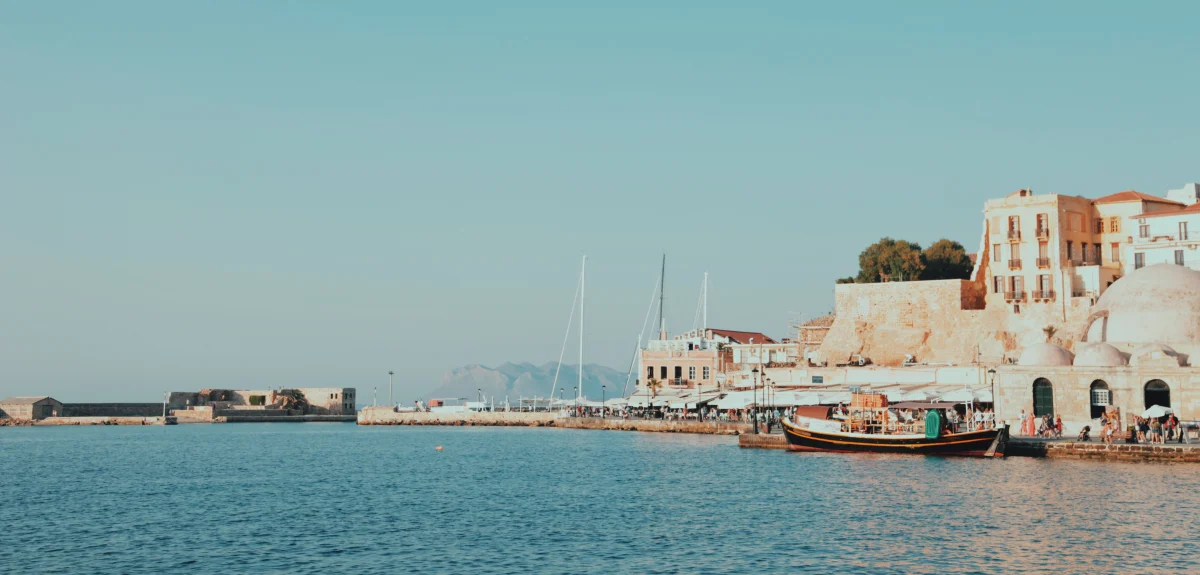
This summer's guide to Crete
From spectacular beaches to historical cultural treasures.
Crete is the largest of the more than 2,000 islands in the Greek archipelago. The elongated island has a diverse climate, with lush, rolling hills in the west and a flatter, more barren landscape in the east. Regardless which side of the island you’re staying on, the idyllic beaches are never far away.
While Crete has become the go-to spot for sun worshiping, the destination boasts much more than just beautiful beaches and crystal-clear water. Historical finds from the mythical Minoan culture and spectacular hiking trails also make the island the perfect destination for adventure seekers. Crete is also known for its incredible cuisine. Alongside common Cretan specialties, scrumptious cheeses, olives, breads, salads, soups, stews, and grilled meats dominate the menus of the small “tavernas”. Keep an eye out for “dakos” (a type of flatbread with tomatoes and cheese), “kalitsounia” (small cheese or vegetable pies), and “boureki” (a potato, zucchini, and cheese gratin), and don’t forget to conclude each meal with a savory dish of yogurt topped with honey and nuts or a slice of fresh baklava (a sweet pastry made from phyllo dough).
Where to swim

Shimmering pink sand
Elafonissi Beach

An idyllic beach on the west coast of Crete with shimmering, powder-pink sand. The beach is surrounded by a scenic lagoon with shallow, turquoise-green water. If you prefer a more undiscovered beach nearby, head to Kedrodasos just a few kilometers away, an equally stunning beach with crystal-clear water.
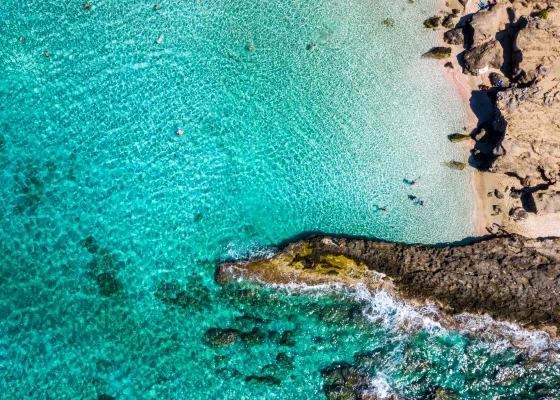
A must for snorkelers
Falasarna beach

Another incredible beach slightly farther north on the island’s west coast is Phalasarna. The smooth, fine-grained sand and clear water create ideal conditions for snorkeling. After you dry off, you can enjoy a captivating view of the sunset from one of the seaside cafés.
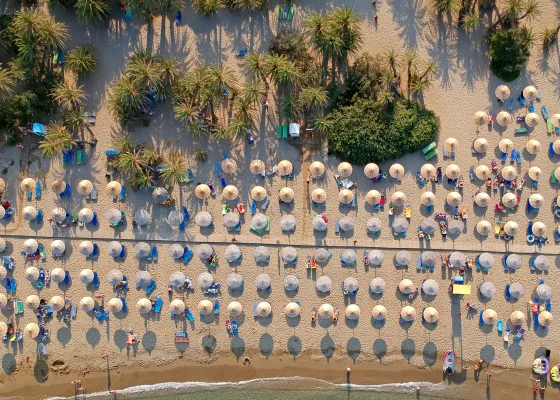
Exotic palms
Vai Beach

Vai Beach and the surrounding palm forest on the east end of the island is said to have been discovered by hippies in the 1970s. With its calm, swaying palm trees, chalk-white sand, and crystal-clear water, it’s not hard to understand why it’s one of the most popular beaches in Crete.
Where to stay
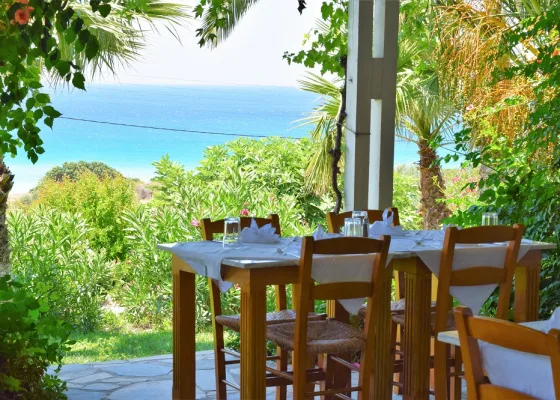
Simple, family-owned accommodations
Hotel Plakures

Hotel Plakures is a cozy, family-owned hotel just a stone’s throw away from Falasarna Beach. The modest establishment, which offers both rooms and serviced apartments, features a lush poolside garden and a popular restaurant where you can enjoy delicious, traditional Cretan dishes.
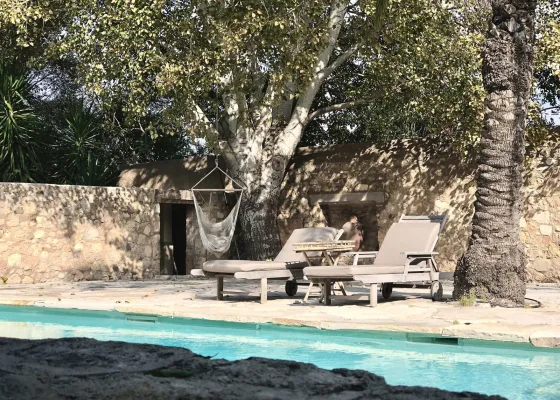
Rustic charm
Metohi Kindelis

Just outside of Chania, you’ll find Metohi Kindelis, a relaxing hideout that’s the perfect getaway if you’d like to experience the Greek countryside and its culture. The hotel, which is part of a family-owned organic farm, consists of three unique vacation units inside a picturesque but rustic 16th century farmhouse. Relax in the lush garden, take a refreshing dip in the pool, or just enjoy the locally produced breakfast buffet.
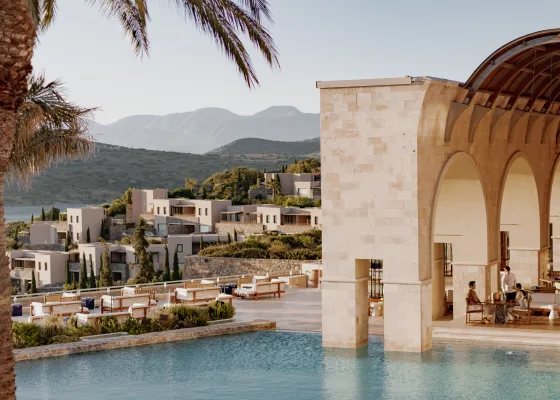
Sophisticated luxury
Blue Palace Elounda

The luxurious Blue Palace hotel in the charming small village of Elounda on the east coast of Crete offers an unforgettable experience. You can stay here in a stylishly decorated room or an exclusive villa (more often than not with its own private pool). The hotel’s private beach, with its stunning view of Spinalonga Island, is worth the price of admission alone.
Where to eat
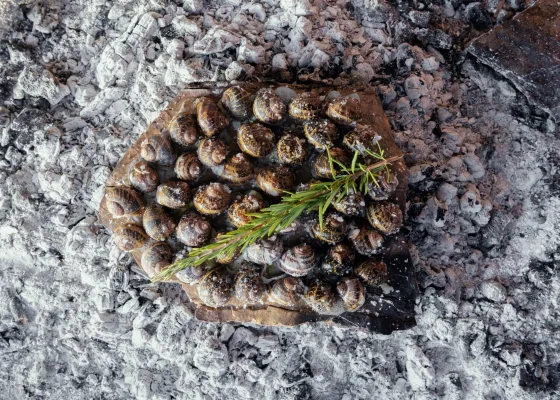
Sustainable and delicious
Peskesi

If you want to experience authentic Cretan food, you should visit Peskesi, a charming, tastefully decorated restaurant in the heart of Heraklion. The menu features familiar dishes as well as lesser known local delicacies, with sustainably produced raw ingredients harvested from their own farm.
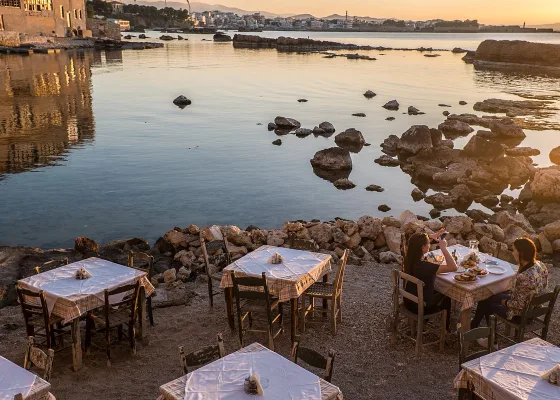
With the sea as a backdrop
Thalassino Ageri

You’ll be hard pressed to find a more romantic restaurant than this. At Thalassino Ageri, on the sea in Chania, you can enjoy succulent seafood and shellfish fresh off the boat along with a sunset to die for.
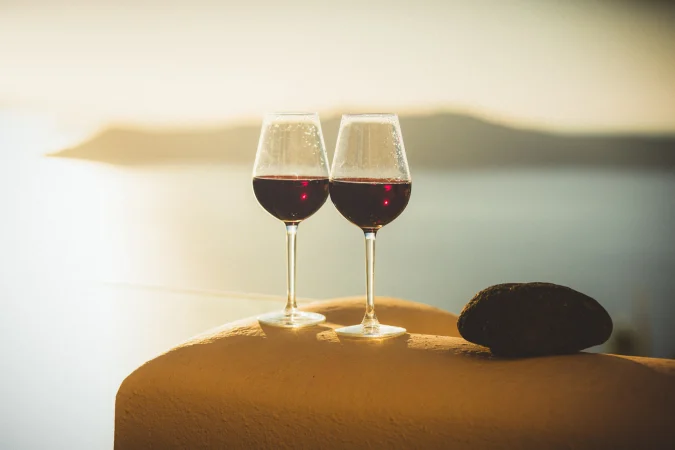
Simply irresistible
La Bodega

If you’re searching for exquisite wines and delicious appetizers and snacks, head to the tiny café, La Bodega, in Chania’s harbor. It’s the perfect place to take a break from the city’s bustling tourist traffic and just enjoy a little genuine Cretan food culture.
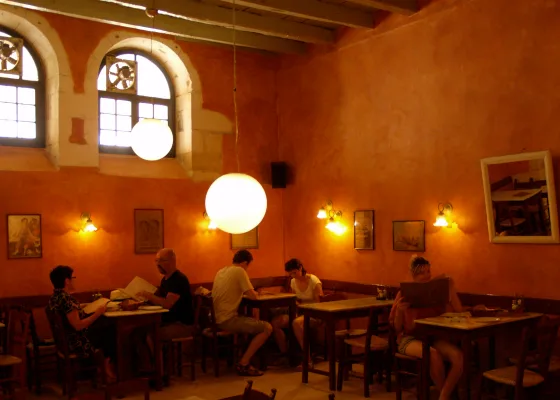
Genuine charm
Tamam

While there are tourist traps a plenty in Chania’s Old Town, the cozy, intimate Greek “taverna”, Tamam, is on a completely different level. The delicious Cretan fare attracts discerning locals as well as tourists. Make sure you try their baked white beans and signature salad with creamy avocado dressing.
Discoveries await
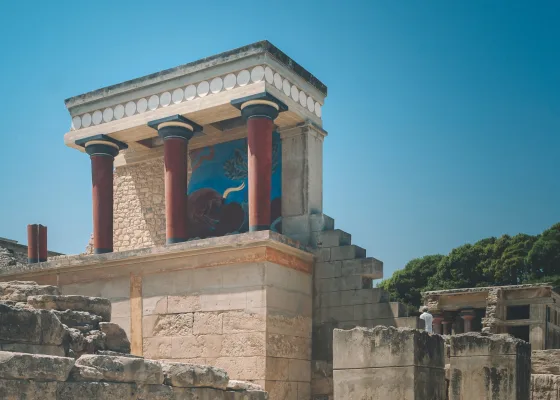
Awe-inspiring ruins
Knossos

The archaeological site of Knossos is one of Crete’s most popular attractions. The prehistoric palace, which was the cultural and political center of Minoan civilization, is a relic from the Hellenic Bronze Age.
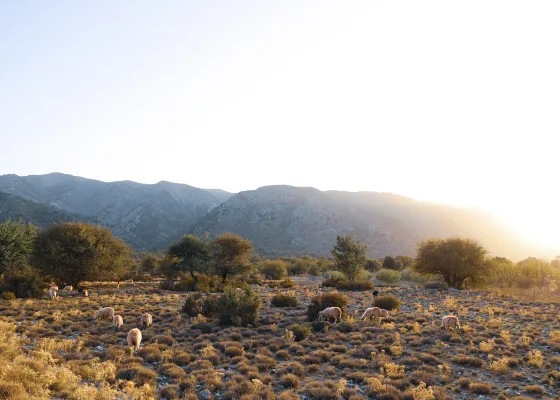
Hike through the deepest gorge in Europe
Samaria Gorge

If you’re an experienced hiker, you’re probably familiar with Samaria Gorge, the longest, deepest gorge in Europe. The trail through the ravine, which winds through a breathtaking 16-kilometer-long landscape, offers a truly unforgettable experience.
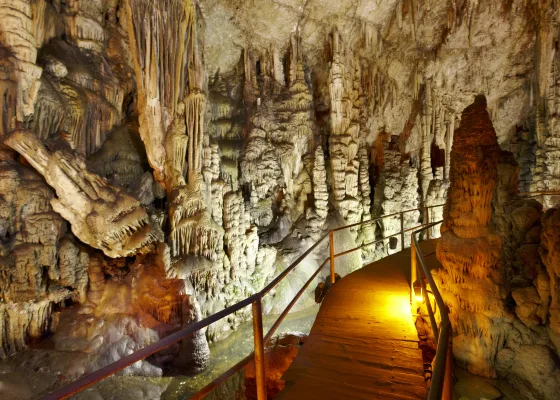
Zeus’ grotto
Dikteon Cave

Adventurous souls will find a number of magnificent grottoes in Crete with fascinating histories. One of the most popular is Dikteon Cave, where according to Greek mythology, Rheia gave birth to Zeus. You’ll find impressive stalactite and stalagmite formations here as well as intriguingly cavernous chambers.
Text by Agnes Regell